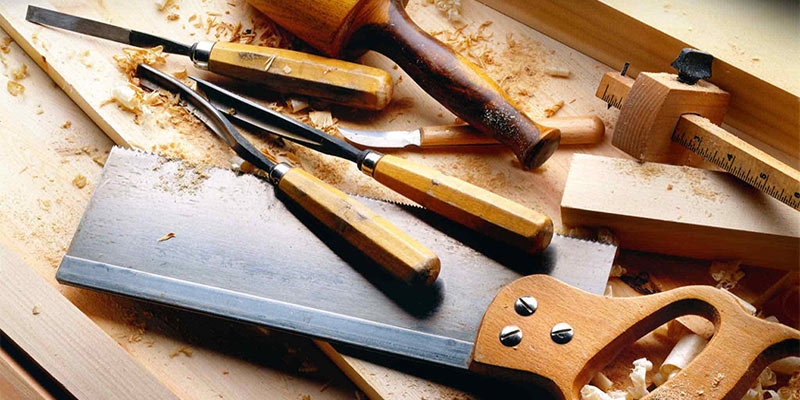
Restoring that antique chair you picked up at auction for a steal isn’t like other woodworking projects. There isn’t a lot of room for brute strength. Think finesse.
A different approach might require that you take a different approach to stock your workshop for tools. The question is tools are the right ones for the job.
Sandpaper for smoothing
An obvious place to start is a way to smooth out the wood and remove old finish. You won’t want the kind of heavy grit used to remove rust and corrosion from metal. You’ll want a fine grit that you can apply with gentle, smooth strokes. If you’ve got some extra money, a random orbital sander is a great tool for this, tool.
Sharp chisels for shaping
If you’ve worked with flat boards, you’re probably already familiar with a planer. For furniture, you’ll want a good set of sharp chisels. These will allow you to take a little more wood off a piece of furniture than sandpaper while still permitting flexibility in how you shape it. This might be important if you’ve got dowels that have swollen over time and no longer fit into holes they were designed for.
A rubber mallet for gentle force
There might be a call for you to pound nails into wooden furniture, but more likely you’ll want to firmly tap things together and hold it fast with wood. So, while you probably have a hammer already in your workshop because who doesn’t have a hammer, if you’re restoring old furniture a rubber mallet is probably even more indispensable. The softer head will allow you to apply force without damaging the furniture.
It’s all in the saw
You probably already have a hand saw or two in your workshop for general project use. Restoring wooden furniture requires saws capable of better finesse, however. A coping saw will help you cut shapes if a saber or electric jigsaw isn’t available. You’ll want to follow this up with more gentle shaping action, either starting with chisels or going right to sandpaper, depending on your skill level.
For more general cutting work, you’ll want to have a small backsaw on hand. It’s smaller than normal saws and has much finer teeth. This will allow you to work with better precision.
Clamps
You might have a job that requires traditional hammer-and-nail work, but when it comes to restoring wooden furniture, probably you’ll spend a lot more time gluing things together. A good set of clamps is important for that sort of thing because those are what you’ll use to hold two pieces of wood together waiting on the glue to set and stiffen.
Wrapping it all up
There is one thing all of these have in common, which is that none of them are tools you probably already have. You might have a need in your day-to-day DIY life for things like claw hammers and screwdrivers, but when it comes to repairing and restoring wooden furniture you have specialized needs that call for specialized tools. While you can probably make do with more generalized tools, these are the ones that are really the things that will separate basic success from specialized success. If you’re restoring wooden furniture, you have to ask why you’re going to the trouble if you don’t want it to turn out pretty special.
Sources
https://www.thespruce.com/top-supplies-to-refurbish-wood-furniture-2879094
https://www.motherearthnews.com/diy/how-to-restore-old-wooden-furniture-zmaz75sozgoe
